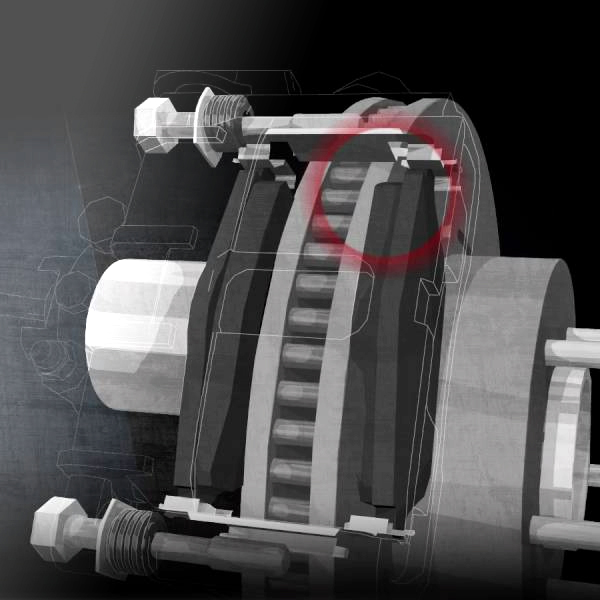

Disc Thickness Variation, DTV is a variation in thickness of the disc rotor braking surfaces as it rotates on the axle. The hydraulic pressure behind the caliper pistons force the brake pad to maintain consistent load on the rotor surface. When the thickness of the disc rotor varies by as little as 20 microns, the pads oscillate back and forth causing a pulsation in the hydraulic circuit back to the brake pedal.
This brake pad oscillation also causes a variation in brake torque as the brake pads grab and release over the higher portion of the rotor thickness. This is typically noticed in the steering wheel as the brake torque from the left and right axles is different and out of sequence.
Brake pad material deposits are often mistaken for DTV.
The key differences to be observed are:
• Pedal pulsation is typically associated with DTV.
• Clearly visible smearing of pad material on the friction surface is associated with material deposits. Vibration increases with temperature.
Both issues may cause steering wheel vibration.
Worn or damaged suspension bushes can also simulate the vibrations associated with DTV, as the loose suspension assembly oscillates back and forth under braking.
Common causes of DTV:
DTV is the end result with many causes behind the generation of this issue. A few of the more common causes are;
• Wheel nut torque. Variations in torque values causing distortion of the disc rotor and hub. Typically associated with pneumatic rattle gun misuse. • Worn or damaged wheel bearing assemblies.
• Not cleaning the hub mounting faces. Scoring or corrosion on the mounting face.
• Bent or damaged wheel studs.
• Irregular thickness of disc rotor anti-corrosion coatings on the mounting face.
• Poor quality rotors. Out of tolerance spec.
Once DTV is correctly identified, disc rotors may be repaired by means of re-machining only, if adequate material is remaining on the disc rotor surfaces. Naturally the mechanical or fitting issues must be addressed to eliminate re-occurrences.